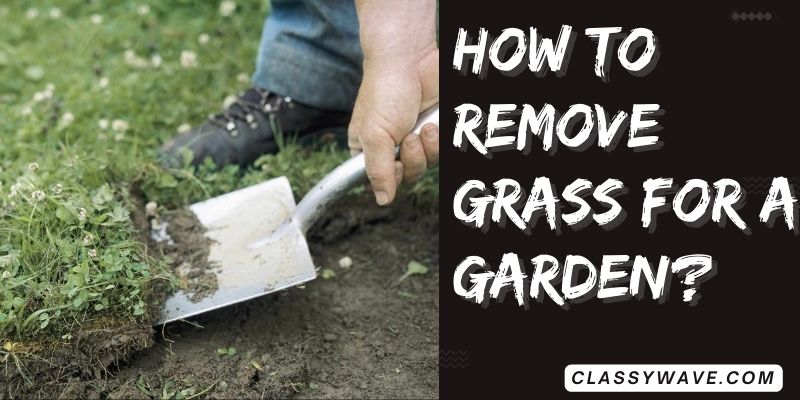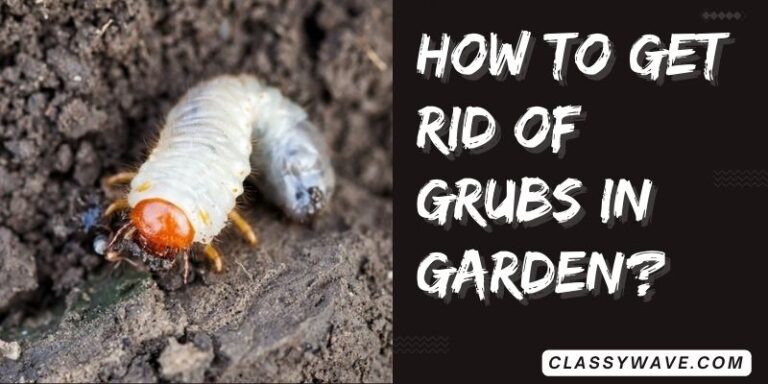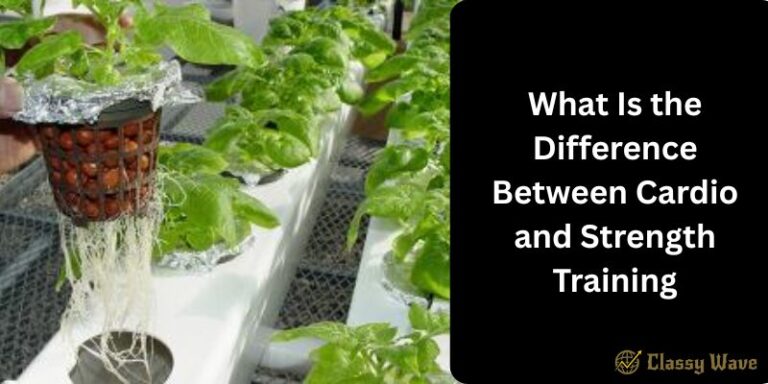How to remove grass from a garden? Effective Techniques
In this comprehensive exploration, various grass removal techniques were dissected, ranging from manual methods to technological innovations. Considerations for sustainability, aesthetics, and ecological impact were highlighted, emphasizing the diverse approaches available. Tailoring strategies to specific needs ensures effective and environmentally conscious grass control, promoting resilient and vibrant gardens.
Manual Methods for Grass Removal
Digging and Hoeing: This labor-intensive method involves manually digging up grass roots and rhizomes using tools like shovels or hoes. It’s effective for small areas and allows for precise control over what is removed.
Hand Pulling: Ideal for isolated weeds or small patches, hand pulling involves manually uprooting grass by hand. While time-consuming, it’s an eco-friendly option suitable for smaller garden spaces.
Sod Cutting: Using a sod cutter, this method removes grass along with its root system, enabling the transplantation of grass-free soil patches elsewhere.
Natural and Organic Grass Removal Techniques
Solarization: This eco-friendly method uses sunlight to heat soil covered with transparent plastic, effectively killing grass and weeds. It’s a chemical-free approach suitable for preparing soil before planting.
Mulching: Applying a layer of organic mulch over grass suppresses growth by blocking sunlight. Mulching also enhances soil health and moisture retention, making it a sustainable option for grass control in garden beds.
Vinegar Solution: A natural alternative, vinegar acts as a herbicide when applied directly to grass. While effective, it may require multiple applications and is best suited for smaller areas.
Mechanical Grass Removal Tools
Lawn Mowers and Edgers: Efficient for maintaining larger grassy areas, mowers and edgers cut grass to a specified height. Regular use helps control grass growth and maintain a manicured appearance.
Turf Cutters: These machines slice through grass and soil, making them suitable for removing large sections of grass for garden redesign or landscaping projects.
Power Rakes: Also known as dethatchers, power rakes mechanically remove thatch and unwanted grass, promoting a healthier lawn by improving air and water penetration.
Grass Removal for Garden Renovation
Clearing for New Planting: Before introducing new plants or landscaping features, clearing existing grass ensures a fresh start. It allows for better soil preparation and reduces competition for nutrients among plants.
Soil Amendment Strategies: Grass removal for garden renovation often involves improving soil quality through amendments like compost or organic matter. This enhances fertility and supports new plant growth.
Replacing Grass with Alternative Groundcovers: Substituting grass with low-maintenance groundcovers minimizes the need for constant mowing and provides a diverse and visually appealing garden landscape. Selecting appropriate groundcovers contributes to sustainable and aesthetically pleasing garden design.
Eco-Friendly Practices in Grass Removal
Composting Grass Debris: Instead of discarding removed grass, composting turns it into a nutrient-rich soil conditioner. This sustainable practice reduces waste and enhances the overall health of the garden.
Natural Mulch Alternatives: Exploring organic mulch options such as straw, wood chips, or shredded leaves provides an eco-friendly approach to suppressing grass growth while offering additional benefits to soil health.
Seasonal Timing for Grass Removal
Spring Grass Removal: Targeting grass in spring disrupts its growth cycle, providing an opportunity to clear unwanted vegetation before it reaches maturity. This timing aligns with the active growth phase for many plants.
Fall Grass Removal: As grass slows its growth in fall, it’s an optimal time for removal to prevent overwintering of seeds and ensure a cleaner start for the following growing season.
Integrated Pest Management for Grass Control
Biological Control: Introducing natural predators or competitors for grass, such as beneficial insects or cover crops, is a sustainable way to manage grass populations without resorting to chemical interventions.
Crop Rotation Strategies: Incorporating a variety of plants in garden rotations disrupts grass growth patterns and minimizes the risk of specific grass-loving pests, contributing to a balanced and resilient garden ecosystem.
Grass Removal in Water-Sensitive Areas
Grass Removal Near Water Sources: Implementing erosion control measures, like buffer zones with native vegetation, aids in minimizing the impact of grass removal near water bodies. This protects water quality and aquatic ecosystems.
Sustainable Practices for Wetlands: Special considerations for grass removal in wetlands involve employing low-impact methods to preserve delicate ecosystems, emphasizing the importance of maintaining biodiversity in these sensitive areas.
Community and Educational Initiatives for Grass Removal
Community Garden Grass Management: Collaborative efforts in community gardens involve sharing knowledge on effective grass removal methods and promoting a healthier gardening environment for all participants.
Educational Outreach Programs: Providing educational resources on sustainable grass removal practices empowers individuals to make informed choices, fostering a culture of environmentally conscious gardening within communities and educational institutions.
Permaculture Approaches to Grass Removal
Designing with Nature: Permaculture principles advocate for working with natural patterns and ecosystems. Grass removal in permaculture involves thoughtful design, such as creating guilds and polycultures, to reduce reliance on constant grass maintenance.
No-Dig Gardening: Embracing a no-dig philosophy minimizes soil disruption, promoting healthy soil ecosystems. This approach integrates well with methods like sheet mulching to suppress grass growth naturally.
Technological Innovations for Grass Removal
Laser and Robotic Solutions: Cutting-edge technologies, like laser systems and robotic tools, offer precision in grass removal. These innovations are particularly useful for large-scale projects, ensuring efficient and accurate grass control.
Smart Irrigation Systems: Implementing intelligent irrigation helps manage water usage, preventing the overgrowth of grass in gardens. Smart systems can adjust watering schedules based on real-time weather data and soil moisture levels.
Historical Practices in Grass Management
Traditional Turf Maintenance: Exploring historical methods of maintaining grass areas provides insights into practices predating modern chemical solutions. Traditional turf care often involved manual tools and cultural practices to keep grass in check.
Historic Garden Renovation: When reviving historical gardens, understanding and replicating traditional grass removal techniques contribute to the authenticity and preservation of these cultural landscapes.
Drought-Tolerant Landscaping and Grass Removal
Xeriscaping Strategies: Designing landscapes with drought-resistant plants reduces the need for extensive grass coverage. Xeriscaping promotes water conservation and sustainable gardening practices in regions prone to water scarcity.
Drought-Tolerant Grass Alternatives: Identifying and incorporating grass varieties adapted to arid conditions allows for aesthetically pleasing lawns while conserving water resources.
Artistic and Aesthetic Considerations in Grass Removal
Sculpted Landscapes: Grass removal can be approached as a form of artistic expression. Creating sculpted landscapes by strategically removing grass contributes to visually striking and unique garden designs.
Color and Texture Contrasts: Incorporating diverse plant species and groundcovers in areas where the grass is removed adds texture and color contrasts, enhancing the overall aesthetic appeal of the garden.
Regenerative Agriculture Practices for Grass Control
Cover Cropping: Introducing cover crops in rotation with cash crops helps suppress grass and weeds, promoting soil health and fertility. This regenerative agriculture practice reduces the reliance on external inputs.
Holistic Grazing Management: In agricultural settings, controlled grazing by livestock can be strategically implemented to manage grass growth, enhancing soil structure and nutrient cycling.
Urban Gardening Techniques for Grass Removal
Container Gardening: Ideal for urban spaces, container gardening minimizes the need for extensive grass removal. Plants in containers can be strategically placed to create green spaces without the challenges of traditional lawn maintenance.
Vertical Gardening Solutions: Utilizing vertical spaces for gardening reduces ground-level grass areas, allowing for creative and space-efficient alternatives in urban environments.
Ethical Considerations in Grass Removal
Wildlife-Friendly Gardening: Adopting practices that consider wildlife habitats during grass removal ensures the preservation of biodiversity. Providing refuge for pollinators and other beneficial species contributes to a more ecologically balanced garden.
Non-Invasive Species Management: Ethical grass removal involves identifying and controlling invasive grass species that may threaten native flora. This ensures the preservation of local ecosystems and prevents the spread of harmful plant species.
Microclimate Influences on Grass Growth
Shade Gardening Techniques: Understanding how shade affects grass growth allows for the strategic planting of shade-loving plants to control grass expansion in specific areas naturally.
Microclimate Modification: Manipulating microclimates, such as through the strategic placement of structures or vegetation, can influence grass growth patterns, providing natural solutions for grass control.
Cultural Practices and Grass Removal
Traditional Japanese Gardening: Inspired by Japanese gardening principles, grass removal can be approached as an art form. Techniques such as moss gardening and meticulous pruning contribute to serene and aesthetically pleasing landscapes.
Mediterranean Garden Design: Mimicking the low-maintenance landscapes of the Mediterranean, incorporating gravel, rocks, and drought-tolerant plants minimizes the need for extensive grass areas, creating visually appealing and water-efficient gardens.
Aquatic Environments: Managing Grass in Water Gardens
Aquatic Plant Filters: Incorporating aquatic plants like water lilies and submerged grasses helps naturally filter water and suppress unwanted grass growth in ponds or water features.
Floating Wetlands: Floating islands with selected plants can be utilized to control grass growth in water bodies, providing both aesthetic appeal and ecological benefits.
Organic Lawn Alternatives for Grass-Free Spaces
Clover Lawns: Replacing traditional grass lawns with clover offers a low-maintenance, nitrogen-fixing alternative. Clover lawns require less water and mowing while providing a lush, green ground cover.
Native Meadow Plantings: Establishing native meadows in place of lawns promotes biodiversity and reduces the need for constant grass management. These ecosystems support local wildlife and contribute to ecosystem resilience.
Contemporary Landscape Architecture and Grass Removal
Minimalist Garden Design: Embracing minimalist principles in landscape architecture involves strategic grass removal to create clean, open spaces that prioritize simplicity and functionality.
Dynamic Hardscape Integration: Combining grass removal with innovative hardscape elements, such as pathways and seating areas, enhances the usability and visual appeal of contemporary garden designs.
Community-Led Grass Removal Initiatives
Community Workshops on Sustainable Gardening: Hosting workshops and events within communities educates residents on sustainable and effective grass removal methods, fostering a shared commitment to environmentally friendly practices.
Neighborhood Greening Projects: Collaborative efforts to transform unused grassy areas into community gardens or green spaces contribute to local beautification and a sense of shared responsibility.
Interactive Technologies for Grass Monitoring and Control
Smart Sensors for Lawn Health: Utilizing sensor technologies helps monitor soil conditions and grass health, enabling proactive grass management strategies based on real-time data.
Automated Irrigation Systems: Implementing smart irrigation systems that adjust watering schedules based on weather conditions and soil moisture levels contributes to efficient grass control in both residential and commercial landscapes.
Conclusion
In conclusion, the diverse array of grass removal methods, from manual to technological, offers tailored solutions for gardeners. Sustainability, aesthetics, and ecological impact are integral considerations. Embracing practices such as permaculture, regenerative agriculture, and urban gardening aligns with evolving environmental consciousness. As we navigate the complexities of grass management, a nuanced understanding of seasonal timing, historical practices, and technological innovations empowers us to cultivate resilient and visually appealing landscapes. Through mindful choices, we can embark on a journey toward sustainable and vibrant gardens that harmonize with both nature and modern advancements.
FAQs
Question: Can I use vinegar to remove grass?
Answer: Yes, vinegar acts as a natural herbicide. Apply directly to grass for an eco-friendly and effective removal solution.
Question: How do I prevent grass regrowth after removal?
Answer: Consider using pre-emergent herbicides or mulching to suppress regrowth. Regular maintenance and soil amendments also help.
Question: What is the best time to remove grass from a garden?
Answer: Spring and fall are optimal. Spring disrupts growth cycles, while fall prevents the overwintering of seeds for cleaner removal.
Question: Can I replace grass with alternative groundcovers?
Answer: Yes, choosing low-maintenance groundcovers reduces the need for constant mowing and adds aesthetic diversity to your garden.
Question: Are there eco-friendly tools for grass removal?
Answer: Yes, tools like manual sod cutters, reel mowers, and hand tools offer eco-friendly alternatives to powered machinery.







